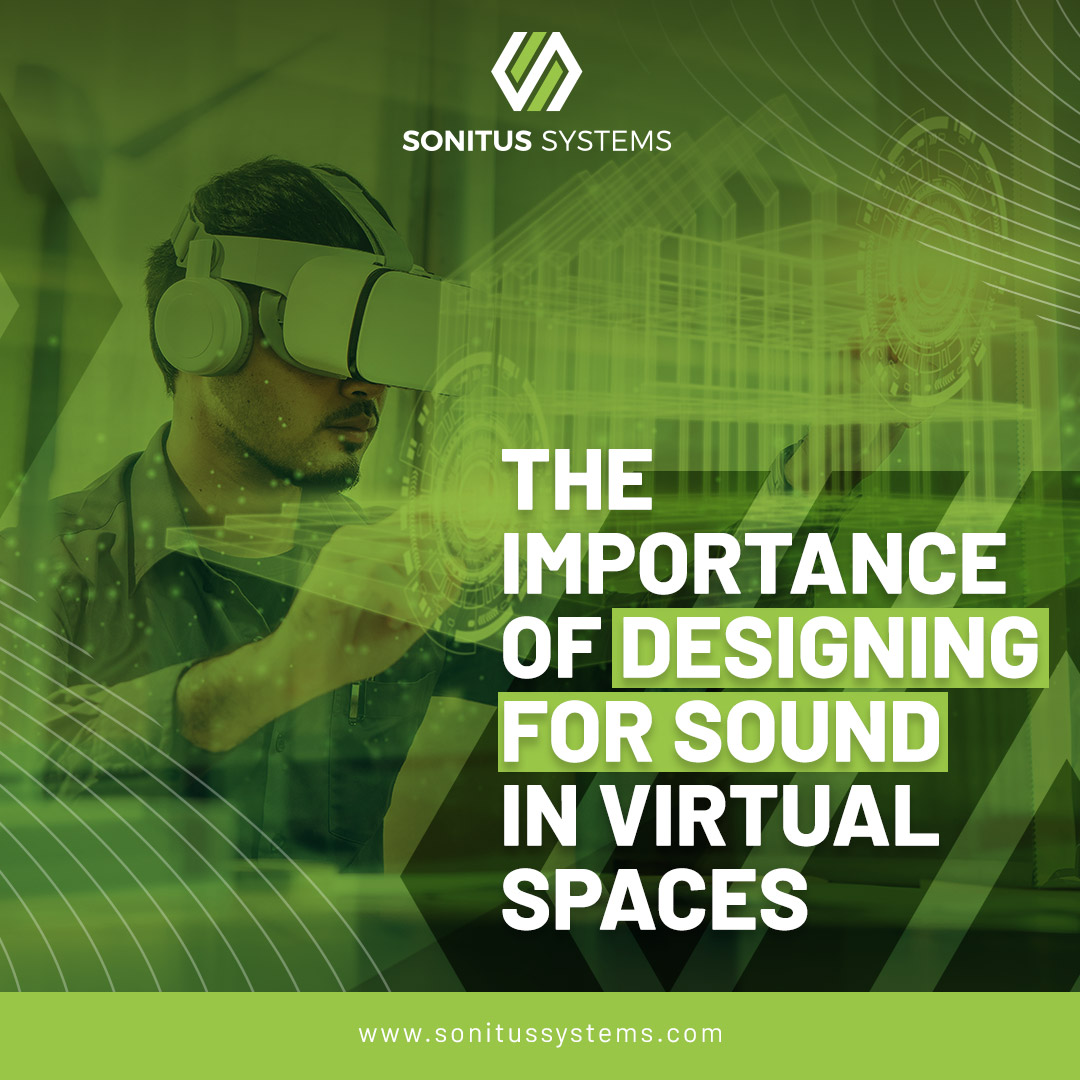“In automotive, engineering, and construction (AEC), understanding how a space sounds can be crucial to the design process…”
As Sonitus Systems HQ, we are passionate about acoustics and psychoacoustic, and have been long time advocates for a ‘managed’ approach to noise and soundscapes in the workplace (for example: Are Personalised Bio-Soundscapes The Antidote To Noisy Workplaces? https://www.sonitussystems.com/insights/are-personalised-bio-soundscapes-the-antidote-to-noisy-workplaces/), but what about virtual workplaces or for people who work or spend a lot of time in the virtual world?
Immersive environments have come a long way in terms of visual fidelity, but what about sound? It’s an essential aspect of our perception of reality that is often overlooked in the design process. That’s where research by a company called Treble comes in. The company is developing realistic sound reproduction for virtual spaces, with a focus on the automotive, engineering, and construction industries.
If you need any convincing on the importance of this, take a quick read of our introduction to psychoacoustics, here:
Treble CEO Finnur Pind sat down with AR Post to discuss the challenges and opportunities in creating believable immersive sound. The key challenge is that sound is caused by vibrations of the air, which are absorbed and reflected in unique ways based on the physical properties of the environment. Virtual environments, on the other hand, don’t have physical properties, and sound is conveyed electronically rather than acoustically.
The closest we’ve come to real immersive sound is “spatial audio,” which represents where a sound is coming from and how far away it is from the listener by manipulating stereo volume. But it still doesn’t account for environmental factors. Treble’s solution is to use a “wave-based approach” that simulates acoustics and renders the environment that produces them, taking into account the source of the audio, the geometry of the space, and the physical properties of the building material.
Treble’s approach has its roots in academia, but until now, it has been too computationally heavy to find practical use. The company’s solution is to use synthetic data generation to model how sound would behave in physically-based spaces that may or may not exist, to create sound profiles for testing audio hardware, and to train AI to work with sound.
The potential applications of Treble’s technology are vast, from enhancing digital design models for the AEC industry to creating immersive concerts and XR venues. Research has shown that having realistic sound in a VR environment improves immersion, and in AR, it can greatly aid realism by augmenting the sound of a real space.
Treble’s platform connects directly to a 3D building model, enabling designers to not only see but also hear what a building will sound like. This is especially important for the AEC industry, where understanding how a space sounds can be crucial to the design process. As Pind notes, “It’s not just seeing what your building will look like, but hearing what your building will sound like.”
In the future, Treble’s technology may have applications in platforms like Microsoft Mesh or Varjo Reality Cloud, where users are essentially sharing or exchanging surroundings via VR. By recreating the real spaces of one user as the virtual space of the other user, the technology can greatly aid immersion and realism.
The research by Treble and ourselves, and indeed other acoustics innovators, is revolutionising our understanding of sounds and their impacts across different environments. The potential applications of these technologies are vast, from enhancing digital design models for the AEC industry to creating immersive concerts and XR venues. With synthetic data generation, acoustic engineers can model how sound would behave in physically-based spaces that may or may not exist, creating sound profiles for testing audio hardware and training AI to work with sound. By connecting directly to a 3D building model, designers will not only be able to see, but also hear, what a building will sound like.
Read the article in full here: https://arpost.co/2023/03/17/treble-realistic-sound-virtual-spaces/amp/
Sonitus Systems offers both the hardware and software for a range of environmental parameters on a continual basis, with real-time information available through our Sonitus Cloud dashboard. For more details on our indoor and outdoor noise and air quality monitoring products and services, please contact the team at https://www.sonitussystems.com/contact-us
